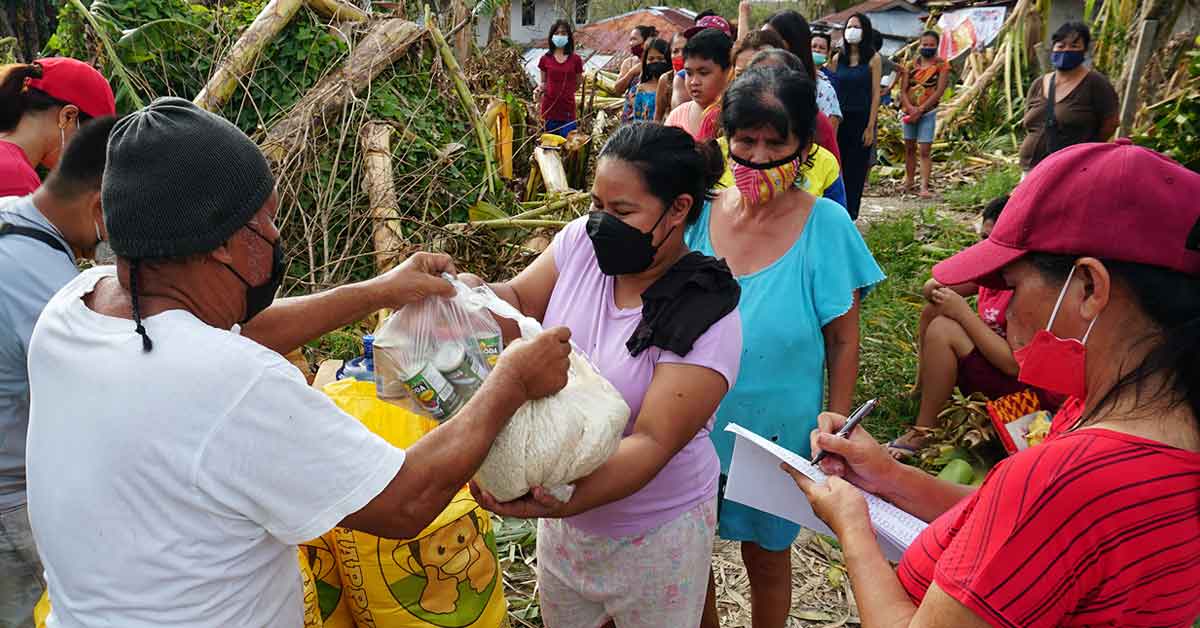Concepcion Tumanda picks through the mud-caked wreckage of her home on a Philippine island devastated by Typhoon Rai that left hundreds dead across the country and survivors pleading for food and water.
Rai slammed into the popular tourist destination of Bohol last Thursday, dumping torrential rain, ripping off roofs, uprooting trees and smashing fishing boats.
"The house was destroyed, everything was broken," Tumanda told AFP, weeping as she stood in the ruins of her home in the riverside town of Loboc.
"We have nothing left."
Bohol - known for its dive spots, rolling "Chocolate Hills" and tiny tarsier primates - was one of the hardest-hit islands after Rai flooded villages and sent residents scrambling to their rooftops.
At least 98 people lost their lives, Governor Arthur Yap said on Facebook. Another 16 were still missing.
Yap has pleaded for President Rodrigo Duterte to send funds to buy food and water for desperate residents after electricity and communications were knocked out across the island.
"We need food, especially rice, and water," said Giselle Toledo, whose house was swept away by floodwaters.
"We were not able to save anything. We don't know where to start our lives again."
Rai also caused widespread destruction on Siargao, Dinagat and Mindanao islands, which bore the brunt of the storm, packing winds of 195 kilometres (120 miles) per hour.
Duterte declared a state of calamity in the typhoon-hit areas, where at least 375 people were killed, freeing up funds for relief efforts and giving local officials power to control prices.
The military has deployed ships, boats, aircraft and trucks to deliver food, drinking water and medical supplies to survivors.
The Red Cross is also distributing aid, and a growing list of foreign governments have pledged millions of dollars in financial assistance.
But local officials and residents complain it is not arriving fast enough.
"Please speed up the relief, it's our only hope because we have nothing else," said a worker on a floating restaurant on the Loboc river that was destroyed in the storm.
‘Water Is Our Main Problem’
Lines of people waiting to refill empty water drums have formed along roadsides of Bohol, while large crowds of motorbike riders queue up at petrol pumps.
"Water is our main problem," said Jocelyn Escuerdo, who is living with her family at an evacuation centre after they were left homeless.
"The containers provided by relief agencies are not very big, just five litres, so we run out of water all the time," she said, adding they have "just enough" food for a day.
While many people fled their homes before the storm hit, some stayed behind to look after precious livestock like chickens and pigs, as well as to protect their properties.
Some of them were cut off by flooding and went hungry for three days, said village chief Pedro Acuna - until he paddled a boat to deliver the food.
Nearly a week after the typhoon hit, residents are still trying to salvage furniture and other belongings from their destroyed homes.
Elderly resident Telesfora Toledo said she did not know how to start again, with "so many things that need to be fixed."
"It was so painful looking at what was left of the house," Tumanda said, digging out plates and other kitchen items that survived the onslaught.
"We will try to repair it... if people give us wood and roofing sheets."
